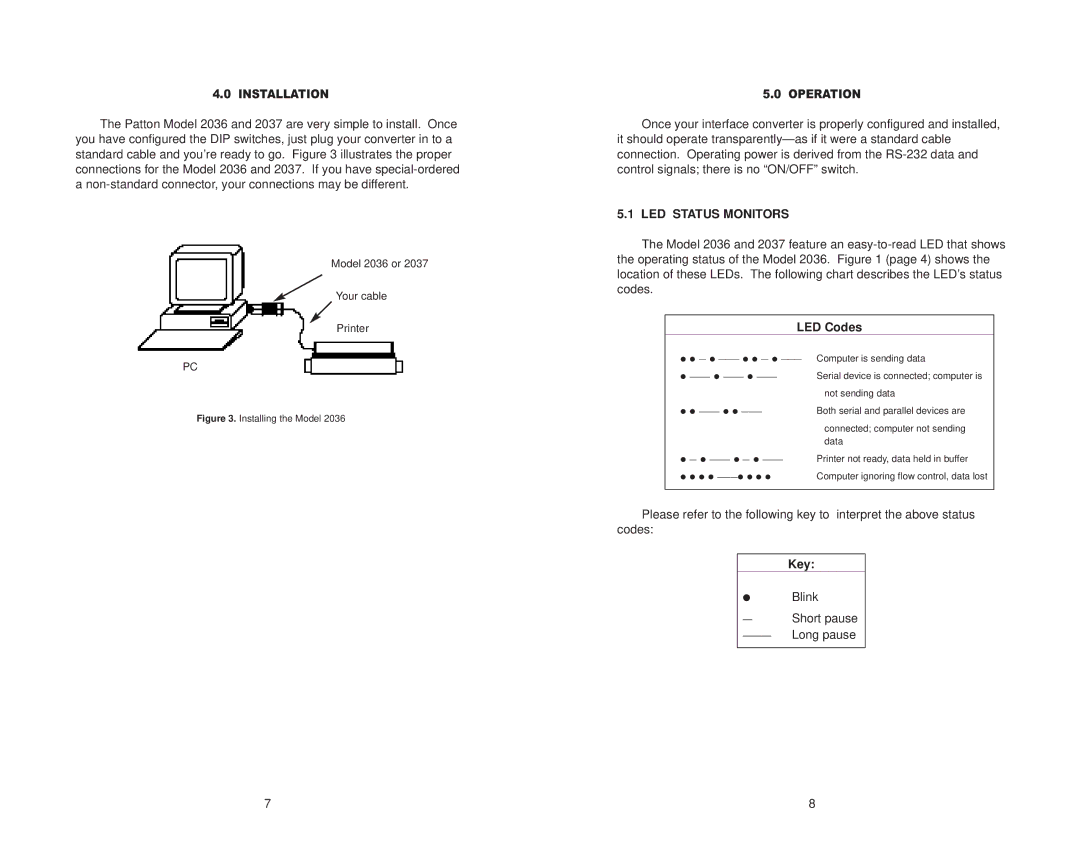2037, 2036 specifications
The Patton Electronics 2036 and 2037 series are advanced networking devices designed to deliver high-performance communication solutions for various applications, including voice, data, and video services. These devices are renowned for their reliability, versatility, and ease of use, making them an ideal choice for businesses and service providers seeking robust connectivity.One of the main features of the Patton 2036 and 2037 models is their ability to convert analog signals to digital and vice versa. This capability makes them essential for integrating legacy analog equipment into modern digital networks seamlessly. The devices support both T1/E1 and E&M interfaces, allowing for flexible connectivity options based on the user's specific requirements.
Another significant feature is the built-in support for VoIP (Voice over Internet Protocol) technologies, facilitating cost-effective voice communication over IP networks. The Patton 2036 and 2037 offer high-quality voice processing capabilities, ensuring that calls maintain clarity and reliability, which is crucial for business communications. They come equipped with advanced echo cancellation and voice activity detection technologies to enhance audio quality further.
In terms of management and configuration, the Patton devices are user-friendly, providing both web-based and command-line interface options for easy setup and monitoring. The built-in SNMP (Simple Network Management Protocol) support allows network administrators to oversee device performance and troubleshoot issues remotely, thereby minimizing downtime and maintaining service quality.
The rugged design of the Patton 2036 and 2037 series ensures reliable operation in a variety of environments. With an operating temperature range that accommodates various conditions, these devices can be deployed in data centers, remote offices, or industrial settings without compromising performance.
Moreover, the Patton 2036 and 2037 models are equipped with advanced security features to protect data integrity and secure voice communications. This includes encryption options and robust authentication processes to safeguard against unauthorized access and potential cyber threats.
Overall, the Patton Electronics 2036 and 2037 series stand out as durable, high-performing solutions that cater to the evolving needs of today’s digital communication landscape, making them a wise investment for organizations looking to enhance their connectivity and operational efficiency.

